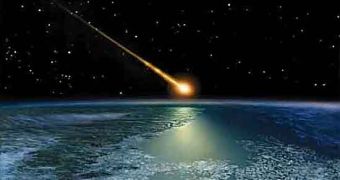According to a new investigation, the meteor that exploded over Russia's Chelyabinsk region on February 15, 2013 produced a shockwave that circled the globe not once, but twice.
The findings of the investigation are detailed in an article published in a recent issue of the scientific journal Geophysical Research Letters.
The researchers say that, after they had analyzed data collected with the help of several sensors, they reached the conclusion that the energy unleashed when the meteor disintegrated was the equivalent of 460 kilotons of TNT exploding all at once.
“It [the blast] generated infrasound returns, after circling the globe, at distances up to ~85,000 km, and was detected at 20 infrasonic stations of the global International Monitoring System (IMS),” the researchers write in the Abstract for their paper.
“For the first time since the establishment of the IMS infrasound network, multiple arrivals involving waves that traveled twice round the globe have been clearly identified,” they further detail on their findings.
Given the amount of energy released when the Russian fireball disintegrated over the Ural Mountains, specialists say that this incident rivals the Tunguska blast in 1908.
“This extraordinary event is, together with the 1908 Tunguska fireball, among the most energetic events ever instrumentally recorded,” the scientists wish to point out.
When the Tunguska explosion occurred on June 30, 1908, approximately 2,000 square kilometers of forest found close to Russia's Podkamennaya Tunguska river were wiped out in the blink of an eye.
The blast is estimated to have packed the equivalent energy of 3-5 megatons of TNT.
Although many say that this incident was also caused by a meteor, there appears to be no scientific evidence to support such claims.
As reported, a researcher named Victor Kvasnytsya claimed to have collected and analyzed rock fragments whose make-up indicated that they might have been left behind by an iron-rich meteor.
However, skeptics say that there is no way of knowing how and when the rock samples Victor Kvasnytsya analyzed ended up on our planet.

 14 DAY TRIAL //
14 DAY TRIAL //